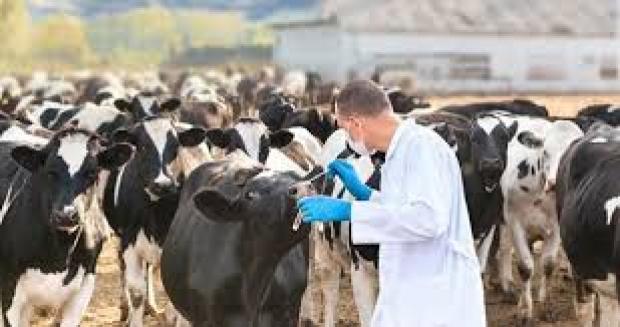PODCAST: The Roles Urbanization and Conservation Play in the Spread of Zoonoses

In cities around the world, there are strange sights to behold everywhere as COVID-19 keeps us locked indoors. Gangs of turkey swarm empty bay area streets. Wild boars infiltrate forlorn European cities. Silka deer, a generally reticent species, wander Japanese subways. We think that once the quarantine ends and the streets become crowded and noisy, biodiversity will find their rightful spot in the forests and lakes beside us. But little do we know that it is because of the rapid expansion of cities and residences—otherwise known as urbanization—and subsequent habitat loss which forces human-animal proximity and exacerbates the spread of zoonoses like COVID-19 in the first place.
Ecosystems are like buffer zones—a natural firewall keeping dangerous mammalian zoonoses hosts away from humans. It is the high vertebrae diversity in these ecosystems creating a ‘dilution effect’ that maintains the distance between said hosts and humans, reducing the risk of transmission; however, human modification of these ecosystems produces conditions that allow disease hosts to overpopulate in nearby locations and, in turn, infect us. Although studies show otherwise, many believe urbanization is safe from zoonotic infections because the only animals we can see are innocuous. Take the red squirrel, for example: a benign species who has adapted to urban areas after losing their natural forestial habitats to urbanization. These squirrels were found to flourish under the supervision of humans and have successfully integrated themselves into urbanized landscapes. Squirrels are cute, aren’t they? But what about if more dangerous species, like bats, find their way into our residencies? No longer cute, right? If urbanization continues to grow at the rate it is, it won’t be long before more contagious primates like bats are forced to adapt to our towns and pastures. Even worse, due to the mitigated dilution effect, these dangerous pests will populate at even more dangerous levels. Once this happens, pathogen transmission will only increase relative to community size and density, and the spread of zoonotic diseases could reach a point of no return.
What COVID-19 has done is highlighted the oblivious bubble we’ve lived in that has allowed urbanization to continue, destroy habitats, and consequently increase the risk of contracting zoonoses. Not surprisingly, all this shows the important role conservation plays in controlling and mitigating the spread of zoonotic diseases. In a 2020 study, researchers found that conservation status played a large part in reducing the number of transmissible zoonoses found in a single mammalian host. What this means is that animals and ecosystems need is help, and fast, if we want to prevent another pandemic. While public health, which is responsible for testing, quarantining, and developing vaccines, is an important industry that keeps us safe from the diseases surrounding us, it is conservation efforts that make this sector flourish and work efficiently; after all, it’s sustainable conservation initiatives that decrease the risk of spillover events—where hosts and humans come into contact—and allow buffer zones to rehabilitate and recuperate. Now, it is up to us to make sure these species and ecosystems are rebuilt, protected, and have the ability to stay far, far away.
Sources
Singh M. Emboldened wild animals venture into locked-down cities worldwide. The Guardian. 2020 Mar 22 [accessed 2020 Aug 27]. https://www.theguardian.com/world/2020/mar/22/animals-cities-coronavirus…
Everard M, Johnston P, Santillo D, Staddon C. The role of ecosystems in mitigation and management of Covid-19 and other zoonoses. Environmental Science & Policy. 2020;111:7–17. doi:10.1016/j.envsci.2020.05.017
Johnson CK, Hitchens PL, Pandit PS, Rushmore J, Evans TS, Young CCW, Doyle MM. Global shifts in mammalian population trends reveal key predictors of virus spillover risk. Proceedings of the Royal Society B: Biological Sciences. 2020;287(1924):20192736. doi:10.1098/rspb.2019.2736
Olival KJ, Hosseini PR, Zambrana-Torrelio C, Ross N, Bogich TL, Daszak P. Host and viral traits predict zoonotic spillover from mammals. Nature. 2017;546(7660):646–650. doi:10.1038/nature22975
Jokimäki J, Selonen V, Lehikoinen A, Kaisanlahti-Jokimäki M-L. The role of urban habitats in the abundance of red squirrels (Sciurus vulgaris, L.) in Finland. Urban Forestry & Urban Greening. 2017;27:100–108. doi:10.1016/j.ufug.2017.06.021
